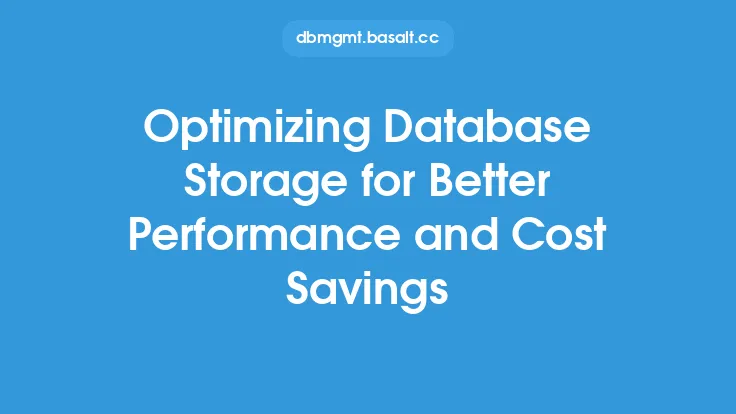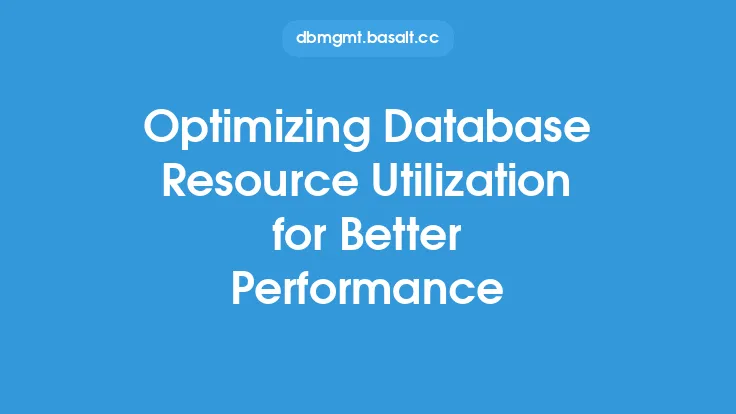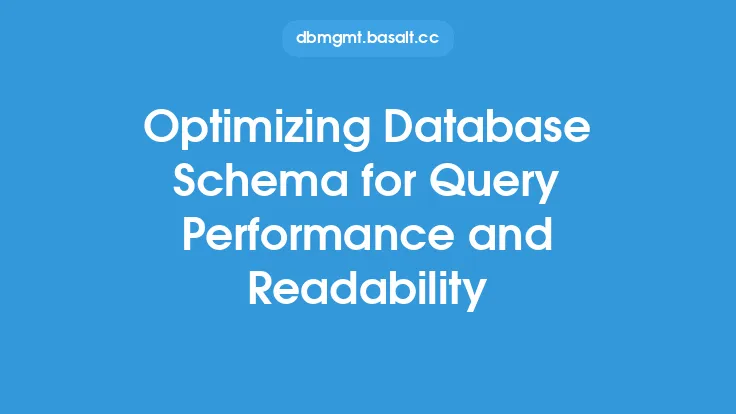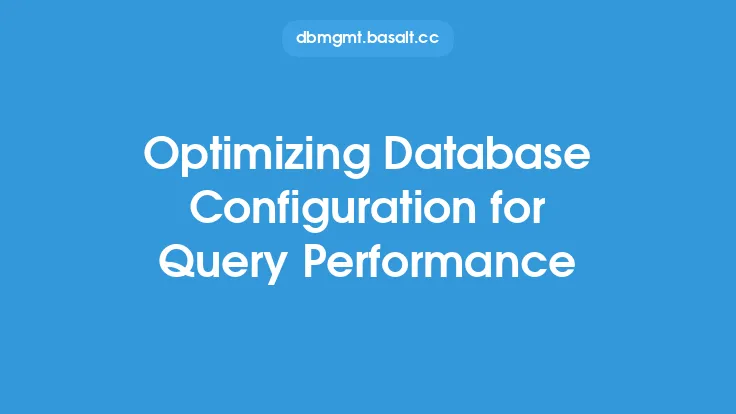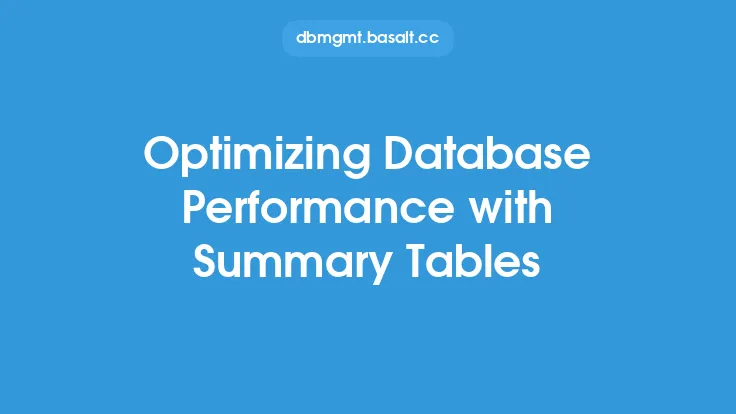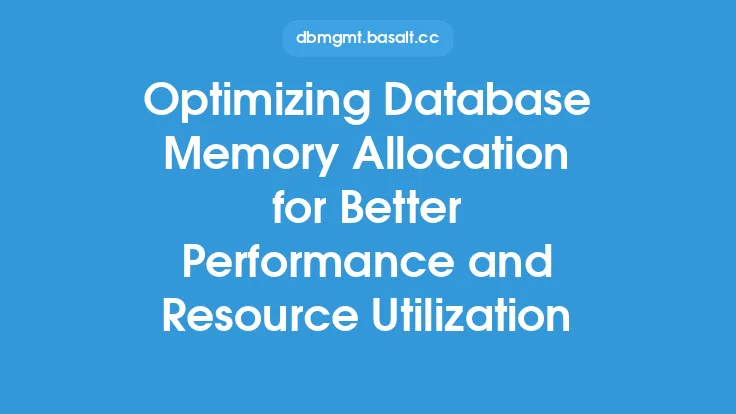When dealing with large datasets, database backup performance becomes a critical aspect of database administration. The sheer volume of data can lead to prolonged backup times, which can impact system availability, performance, and overall data protection. Optimizing database backup performance is essential to ensure that backups are completed efficiently, without disrupting normal database operations. In this article, we will delve into the strategies and techniques for optimizing database backup performance for large datasets.
Understanding Database Backup Performance
Database backup performance refers to the speed and efficiency with which backups are created, stored, and retrieved. It is influenced by several factors, including the size of the dataset, the type of backup being performed, the backup frequency, and the underlying hardware and software infrastructure. For large datasets, backup performance can be a significant challenge, as it requires processing and transferring vast amounts of data. Understanding the factors that affect backup performance is crucial to identifying optimization opportunities.
Identifying Bottlenecks in Database Backup Performance
To optimize database backup performance, it is essential to identify the bottlenecks that impede the backup process. Common bottlenecks include:
- Insufficient disk space or I/O bandwidth
- Inadequate network bandwidth or connectivity
- Poorly optimized database configuration or indexing
- Inefficient backup software or algorithms
- Concurrent system activity or resource contention
By analyzing the backup process and identifying the bottlenecks, database administrators can develop targeted strategies to address these issues and improve overall backup performance.
Optimizing Database Configuration for Backup Performance
The database configuration plays a significant role in determining backup performance. Several configuration options can be optimized to improve backup efficiency, including:
- Buffer pool size and configuration
- Log file size and rotation
- Indexing and statistics maintenance
- Parallelism and concurrency settings
- Data compression and encryption
By adjusting these configuration options, database administrators can reduce the overhead associated with backups and improve overall system performance.
Leveraging Backup Techniques for Large Datasets
Several backup techniques can be employed to optimize backup performance for large datasets, including:
- Incremental backups, which only capture changes since the last backup
- Differential backups, which capture changes since the last full backup
- Data compression, which reduces the size of the backup data
- Data deduplication, which eliminates redundant data
- Parallel backups, which utilize multiple threads or processes to speed up the backup process
By selecting the most suitable backup technique, database administrators can minimize the time and resources required for backups.
Utilizing Hardware and Software Solutions for Backup Performance
Hardware and software solutions can also be leveraged to optimize database backup performance. These include:
- High-performance storage systems, such as solid-state drives (SSDs) or storage area networks (SANs)
- Dedicated backup servers or appliances
- Backup software with advanced features, such as data compression, encryption, and parallel processing
- Cloud-based backup services, which can provide scalable and on-demand backup capacity
By investing in these solutions, organizations can significantly improve backup performance and reduce the risk of data loss.
Monitoring and Analyzing Database Backup Performance
To ensure optimal database backup performance, it is essential to monitor and analyze the backup process regularly. This can be achieved through:
- Backup logging and auditing
- Performance metrics and benchmarking
- Alerting and notification systems
- Backup reporting and analytics
By monitoring and analyzing backup performance, database administrators can identify trends, detect issues, and make data-driven decisions to optimize the backup process.
Best Practices for Optimizing Database Backup Performance
To optimize database backup performance, several best practices should be followed, including:
- Regularly reviewing and updating the backup strategy
- Testing and validating backups to ensure data integrity
- Implementing a backup rotation scheme to manage backup data
- Utilizing backup automation and scheduling tools
- Continuously monitoring and analyzing backup performance
By following these best practices, organizations can ensure that their database backups are completed efficiently, effectively, and reliably.
Conclusion
Optimizing database backup performance for large datasets requires a comprehensive approach that involves understanding the factors that affect backup performance, identifying bottlenecks, and implementing targeted strategies to address these issues. By leveraging backup techniques, hardware and software solutions, and best practices, database administrators can improve backup efficiency, reduce the risk of data loss, and ensure business continuity. As data volumes continue to grow, optimizing database backup performance will become increasingly important to ensure the availability, integrity, and recoverability of critical data assets.
